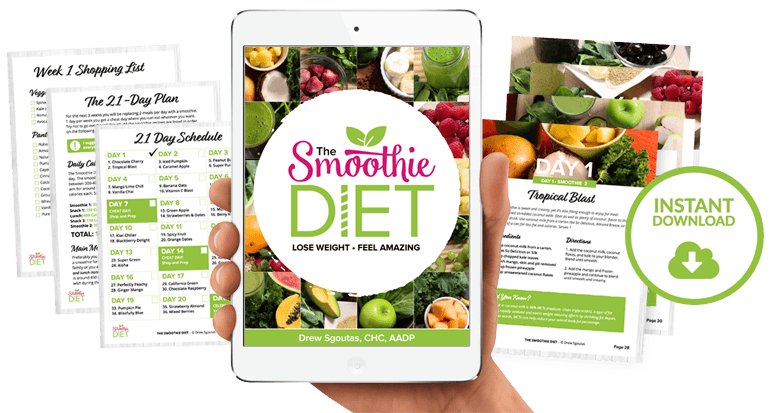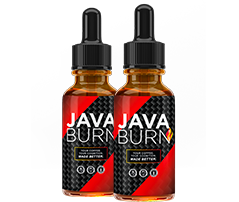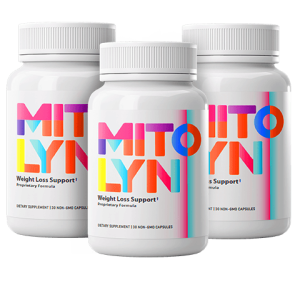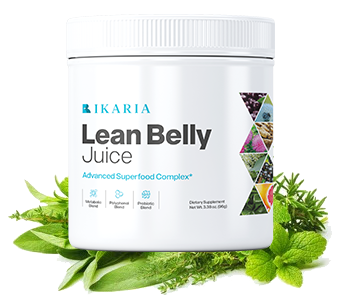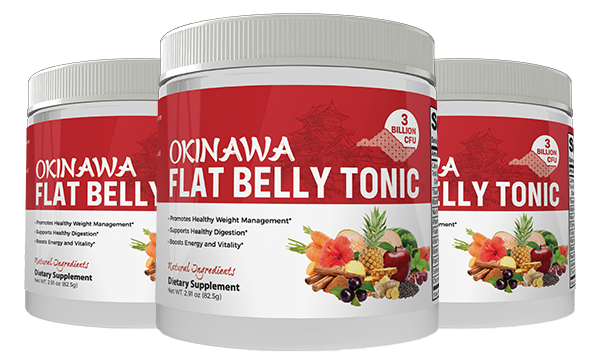Is Weight Lifting Enough for Fat Loss? Understanding the Basics
For many fitness enthusiasts, a common question arises: is weight lifting enough for fat loss? Understanding the basic principles of weight lifting and its effects on fat loss can provide clarity. While lifting weights can be a vital part of a weight loss journey, it’s essential to explore its limitations and how it fits into a well-rounded approach to fat loss.
Weight lifting primarily builds muscle, and increased muscle mass can lead to a higher resting metabolic rate. This means that even when you’re at rest, your body burns more calories. However, can weight lifting alone help achieve your fat loss goals? Let’s dive into a few considerations:
Understanding Caloric Deficit
To lose fat, you must consume fewer calories than you burn, known as a caloric deficit. Weight lifting contributes to the number of calories burned during workouts and can aid in maintaining muscle during a calorie deficit. Here’s how it works:
- BMR Boost: Muscle tissue uses more energy than fat tissue. Thus, the more muscle you build, the greater your Basal Metabolic Rate (BMR).
- Post-Workout Burn: Weight lifting creates an “afterburn” effect, or excess post-exercise oxygen consumption (EPOC), where your body continues burning calories after the workout is finished.
- Appetite Regulation: Engaging in strength training can help regulate hunger hormones, potentially leading to better portion control.
The Role of Cardio
While weight lifting has its advantages, incorporating cardiovascular exercise can enhance fat loss. Here’s a breakdown of how these two types of exercise complement each other:
- Increased Calorie Burn: Cardio workouts usually burn more calories per minute compared to weight lifting, especially during high-intensity sessions.
- Improved Cardiovascular Health: Cardio improves heart health, enhancing your ability to work out longer and harder during weight training sessions.
- Mood Enhancement: Cardio can release endorphins, which might keep you motivated to continue your weight loss journey.
Nutrition Matters
(Weight lifting and cardio) Without proper nutrition, lifting weights alone may not lead to significant fat loss. Here are some key nutrition tips:
- Protein Intake: Ensure you consume enough protein to support muscle recovery. Aim for around 0.6 to 0.8 grams of protein per pound of body weight.
- Whole Foods: Focus on whole foods rather than processed options to maximize nutrient intake while maintaining a caloric deficit.
- Hydration: Staying well-hydrated supports muscle function and overall metabolic health.
Consistency is Key
Regardless of the approach you choose, consistency is vital. Establishing a workout schedule that incorporates both weight lifting and cardio can offer the best results. Here are some strategies:
- Balanced Training Regimen: Aim for a mix of both weight lifting and cardio sessions throughout the week.
- Progressive Overload: Gradually increase your weight lifting intensity to keep your muscles challenged.
- Set Realistic Goals: Track your progress and adjust your calorie intake and exercise routines as needed.
While weight lifting is a powerful tool for fat loss, relying on it solely may not yield the best results. Combining weight lifting with cardiovascular exercise and a balanced diet will help you achieve your fat loss goals more effectively. Consider visiting Bodybuilding.com for more workout ideas, or check out MyFitnessPal to help you track your nutrition and calories. Remember, the journey to fat loss is unique for everyone, and finding what works best for you is crucial for long-term success.
The Science Behind Muscle Growth and Fat Loss
Understanding how the body reacts to muscle training and fat loss is essential for anyone looking to improve their fitness. The relationship between muscle growth and fat loss is intricate. It involves various physiological processes that work in harmony to change your body composition.
Muscle Growth: The Basics
Muscle growth, also known as hypertrophy, occurs when your muscle fibers undergo stress from resistance training. This stress prompts your body to repair the damaged fibers, making them thicker and stronger. The following components play a crucial role in muscle growth:
- Progressive Overload: To stimulate growth, you need to gradually increase the weight or resistance in your workouts.
- Nutrition: Adequate protein intake is vital. It provides the necessary amino acids for muscle repair and growth.
- Rest: Muscles need time to recover. Without sufficient rest, growth stalls.
Fat Loss: The Energy Equation
Fat loss revolves around the principle of energy balance. This means that you must burn more calories than you consume. Here are key factors influencing fat loss:
- Caloric Deficit: To lose fat, create a caloric deficit through diet and exercise.
- Metabolism: Your metabolic rate plays a significant role in how many calories you burn at rest.
- Activity Level: cardio and high-intensity interval training (HIIT) can enhance fat loss.
How Weight Lifting Affects Fat Loss
Weight lifting is often perceived as a means to build strength and muscle. However, it can also significantly contribute to fat loss. Here’s how:
- Increased Muscle Mass: More muscle means a higher resting metabolic rate. This means you burn more calories even when at rest.
- Afterburn Effect: Weight lifting can lead to excess post-exercise oxygen consumption (EPOC), allowing you to burn calories even after your workout.
Combining Weight Lifting and Cardiovascular Exercise
For optimal fat loss, combining weight lifting with cardiovascular exercise can yield the best results. Here’s a strategy to consider:
| Type of Exercise | Recommended Frequency | Duration |
|---|---|---|
| Weight Training | 3-4 times a week | 45-60 minutes |
| Cardio Training | 3-5 times a week | 20-30 minutes |
Nutrition and Its Role in Fat Loss
Your diet plays a critical role in achieving fat loss while maintaining muscle mass. Focus on these aspects:
- Protein Sources: Include lean meats, fish, eggs, and plant-based proteins.
- Healthy Fats: Avocados, nuts, and olive oil are excellent choices.
- Whole Carbohydrates: Opt for whole grains, fruits, and vegetables for energy.
Monitoring Progress
To ensure you’re on the right track with your fitness goals, it’s important to monitor your progress. Keep track of:
- Your weight and body measurements
- Your strength gains in weight lifting
- Your overall energy levels and well-being
For more guidance on muscle growth and fat loss, consider checking resources like Bodybuilding.com or National Strength and Conditioning Association for expert advice and training programs.
Embracing both weight lifting and proper nutrition creates a powerful combination for fat loss. Understanding the science behind these processes can empower you to make informed choices and stay committed to your health and fitness journey.
Weight lifting is not only effective for building muscle but is also a key player in fat loss when coupled with the right strategies. Remember, achieving your goals involves dedication to both resistance training and diet.
Comparing Weight Lifting to Cardio for Effective Fat Loss
When it comes to fat loss, many people wonder if weight lifting is enough or if they should incorporate cardio into their routine. Both forms of exercise play distinct roles in weight management and overall health, making it essential to understand how they compare.
Weight lifting, or resistance training, targets building muscle mass. Increased muscle mass can lead to a higher resting metabolic rate, meaning your body burns more calories at rest. Here are some key benefits of weight lifting for fat loss:
- Increased Muscle Mass: Lifting weights helps you build lean muscle, which can boost your metabolism. The more muscle you have, the more calories you burn daily.
- Afterburn Effect: Weight training can lead to excess post-exercise oxygen consumption (EPOC). This means you continue to burn calories even after your workout is finished.
- Improved Body Composition: While the scale may not show dramatic weight loss, weight lifting can transform your body by reducing fat and increasing muscle definition, giving you a leaner appearance.
On the other hand, cardio, which includes activities like running, cycling, and swimming, primarily focuses on burning calories during the workout. Here are core advantages of incorporating cardio into your fat loss strategy:
- Calorie Burn: Cardio tends to burn more calories during the session compared to weight lifting, especially if done at a high intensity.
- Heart Health: Engaging in cardiovascular exercises strengthens your heart and lungs, reducing the risk of heart disease while also improving your overall endurance.
- Variety: Cardio can be varied with different types of workouts, making it easier to stick to your routine and keep it enjoyable.
| Type of Exercise | Calories Burned (per 30 minutes) | Benefits |
|---|---|---|
| Weight Lifting | 90-250 (depends on intensity) | Builds muscle, increases metabolism, enhances body composition |
| Running | 240-355 (depends on pace) | High calorie burn, improves heart health, increases endurance |
| Cycling | 210-311 (depends on intensity) | Low impact, great for joint health, builds leg muscles |
It’s essential to note that individual goals and preferences should guide your exercise choices. If your primary aim is fat loss, combining both weight lifting and cardio can yield impressive results. Here’s how you can include both in your fitness routine:
- **Alternate Days:** Consider weight lifting on certain days and cardio on others to keep a balanced routine.
- **Combine in One Session:** Start with weight lifting and follow it up with a cardio workout. This combination maximizes calorie burn and muscle building.
- **HIIT Workouts:** High-Intensity Interval Training mixes short bursts of cardio with resistance exercises, targeting both fat loss and muscle maintenance.
Ultimately, the effectiveness of weight lifting versus cardio for fat loss also depends on your diet and lifestyle. A healthy, balanced diet plays a significant role in achieving fat loss goals. Ensure you focus on whole, nutrient-dense foods that support your energy needs and muscle recovery.
Both weight lifting and cardio hold their unique place in a fat-loss plan. a mixture of both can optimize your metabolism, improve your body composition, and support overall health. To dive deeper into fitness and nutrition, consider exploring reputable resources like Bodybuilding.com or Men’s Health for expert advice and workout plans.
Before starting any new workout regimen, it’s always advisable to consult a fitness professional. Tailoring the right mix of weight lifting and cardio to fit your lifestyle, preferences, and goals is the best way to ensure long-term success in your fat loss journey.
The Role of Nutrition in Supporting Weight Lifting and Fat Loss
When it comes to weight lifting and fat loss, many people focus solely on exercise, often neglecting the critical role nutrition plays in achieving their fitness goals. Nutrition is not just about eating less; it’s about eating right. Proper nutrition fuels your workouts, aids in recovery, and shapes your body’s composition. Understanding how to align your diet with your weight lifting routine is essential for optimizing fat loss.
Understanding Macronutrients
The three primary macronutrients are carbohydrates, proteins, and fats. Each of these plays a unique role in supporting weight lifting and fat loss.
- Carbohydrates: These are your body’s main energy source. They provide the fuel needed during high-intensity workouts. However, not all carbs are created equal. Focus on complex carbohydrates like whole grains, fruits, and vegetables, which provide sustained energy.
- Proteins: Protein is crucial for muscle repair and growth. Consuming enough protein helps maintain muscle mass while burning fat. Aim for lean sources such as chicken, fish, legumes, and dairy products.
- Fats: Healthy fats are essential for hormone regulation and can help you feel fuller for longer. Include sources like avocados, nuts, seeds, and olive oil to your diet.
The Importance of Meal Timing
When you eat is just as important as what you eat. Proper meal timing can enhance your weight lifting performance and fat loss efforts. Here’s a simple guide:
| Meal Type | Timing | Suggestions |
|---|---|---|
| Pre-Workout | 30-60 minutes before | Opt for a balanced meal with carbohydrates and proteins, such as oatmeal with fruit. |
| Post-Workout | Within 30 minutes after | Focus on protein and carbohydrates to replenish energy, for example, a protein shake with a banana. |
| Throughout the Day | Every 3-4 hours | Include balanced meals and snacks with macronutrients to maintain energy levels. |
Hydration Matters
Staying hydrated is crucial for optimal performance, especially during weight lifting. Water aids in digestion, nutrient absorption, and regulating body temperature. Consider the following:
- Drink water before, during, and after workouts.
- Aim for about half your body weight in ounces of water daily.
- Consider electrolyte drinks if exercising intensely for more than an hour.
Common Nutritional Mistakes
Many people make errors in their diet that can hinder fat loss, even when weight lifting regularly. Here are some pitfalls to avoid:
- Skipping meals can lead to overeating later; it also affects your energy levels during workouts.
- Focusing solely on calories without considering nutrient quality can deprive your body of essential vitamins and minerals.
- Overconsumption of “healthy” foods can still lead to weight gain; moderation is key.
Supplements: Are They Necessary?
While whole foods should be your primary source of nutrition, some individuals consider supplements to enhance their diet. It’s important to note that supplements should not replace a balanced diet. Consult with a healthcare provider or a nutritionist before integrating any supplements, focusing on:
- Protein powders: Useful for post-workout recovery, but not mandatory if you consume enough protein from food.
- Creatine: Can enhance strength and muscle gain.
- Branched-Chain Amino Acids (BCAAs): May help reduce muscle soreness after workouts.
Proper nutrition into your weight lifting routine can have a profound impact on your fat loss journey. Prioritize a balanced diet, maintain hydration, and pay attention to meal timing. For more detailed nutritional guidance tailored to your unique needs, consider visiting Eat Right or Bodybuilding.com for expert insights.
Your body is a complex system that requires the right fuel to function at its best. Adopting these nutrition strategies will not only support your weight lifting efforts but also significantly enhance your ability to lose fat effectively.
Importance of Consistency and Routine in Your Fitness Journey
Achieving your fitness goals is often a journey filled with ups and downs. While enthusiasm can drive initial motivation, the most significant change comes from building sustainable habits. Consistency and routine play pivotal roles in this process. They are not just buzzwords; they are essential for long-term success. When you embrace a consistent workout regimen and a reliable routine, your chances of success increase dramatically.
Consistency means showing up regularly. Whether you are lifting weights, running, or practicing yoga, doing it consistently helps you build strength, improve skills, and enhance overall fitness. The more often you engage in physical activity, the more likely it becomes a part of your lifestyle. It allows your body to adapt and improve over time. On the other hand, sporadic workouts can lead to frustration and stagnation. Imagine wanting to learn a new language; if you only practice once a month, progress will be slow. The same principle applies to fitness.
Creating a routine ensures that fitness becomes integrated into your daily life. A well-structured routine can provide a clear framework for your workouts and other healthy habits. You can establish specific days for weightlifting, cardio, and rest. Knowing when you will exercise helps eliminate excuses and keeps you accountable. Below are some tips for developing a successful fitness routine:
- Set Clear Goals: Define what you want to achieve. It could be weight loss, building muscle, or enhancing endurance.
- Schedule Your Workouts: Treat your workouts like appointments. Block out time on your calendar to ensure you stay committed.
- Start Small: If you’re new to working out, begin with shorter sessions and gradually increase intensity and duration.
- Mix It Up: Variety is essential to keep things interesting. Incorporate different types of exercise to work various muscle groups.
- Listen to Your Body: Rest days are just as important as workout days. Pay attention to your body to avoid injuries.
Moreover, consistency doesn’t only apply to workouts. Nutrition plays a crucial role in your fitness journey. Consistently eating a balanced diet will fuel your workouts and aid in recovery. Meal prepping can be an effective strategy to ensure you have healthy food options readily available. When you fuel your body with the right nutrients daily, you support your exercise efforts and promote overall health.
Another beneficial aspect of building routines is their positive impact on mental health. Regular exercise can reduce anxiety and depression, boost self-esteem, and improve mood. When you stick to a routine, you gain a sense of control and accomplishment. This benefits not only your physical health but also your mental well-being. You create a rhythm that allows you to plan your life around achieving your fitness goals.
It’s important to remember that every fitness journey has its challenges. There may be days when you don’t feel motivated or struggle to find the time. The key is to keep pushing through these tough moments. They are a natural part of the process. If you encounter setbacks, assess your routine and make adjustments without abandoning your goals. Changing the timing of your workouts or finding a workout buddy can reignite your motivation.
Tracking progress is another vital component of maintaining consistency. Whether through a fitness app or a simple journal, monitoring your workouts and diet can help you stay on track. You can celebrate small victories, whether lifting more weight, running further, or fitting into smaller clothes. These milestones reinforce your commitment and willingness to keep going.
Fitness as a top priority in your routine will yield the most benefits over time. Emphasis on consistency and establishing a sound routine doesn’t just lead to better physical health; it also strengthens your resolve, character, and overall well-being. By embracing these critical elements, each step you take leads you one step closer to achieving your fitness dreams.
For more insights on establishing effective fitness routines, consider visiting resources like MyFitnessPal and Nerd Fitness. These platforms offer a wealth of information to support you on your fitness journey.
Incorporating High-Intensity Interval Training (HIIT) with Weight Lifting
Combining high-intensity interval training (HIIT) with weight lifting can give you the best of both worlds when it comes to fitness. This approach not only builds muscle but also promotes fat loss, making your workouts more effective and efficient.
HIIT involves short bursts of intense exercise followed by brief recovery periods. This method keeps your heart rate up, promoting calorie burning and improving cardiovascular health. When integrated with weight lifting, HIIT can enhance muscle endurance and increase metabolic rate, allowing you to lose fat while building strength.
Integrating HIIT into your weight-lifting routine can be done in various ways. Here are some effective methods:
- Supersets: Pair two exercises back-to-back, one focusing on strength and the other promoting endurance. For example, do a set of squats followed by a minute of jump squats.
- Circuits: Create a workout circuit that combines lifting weights with HIIT exercises. For instance, complete one round of deadlifts, then immediately move to 30 seconds of burpees, then to a bench press, and finish with mountain climbers.
- Finisher Sets: After your weight lifting session, incorporate a HIIT finisher. Spend 10 minutes alternating between high-intensity exercises like kettlebell swings and bodyweight exercises like push-ups.
When planning your sessions, consider the following key points to maximize effectiveness:
- Warm Up: Always begin with a proper warm-up to prepare your body for the workout ahead. Dynamic stretching and light cardio are excellent options.
- Intervals Duration: For HIIT, aim for a work-to-rest ratio of 1:1, such as 30 seconds of work followed by 30 seconds of rest, or adjust based on your fitness level.
- Load Management: Ensure your weight lifting is progressive to avoid plateaus. Start with a manageable weight and gradually increase it as your strength improves.
- Nutrition and Hydration: Proper nutrition is crucial. Fuel your body with quality carbs and proteins before and after your workouts to aid recovery and performance.
One of the most significant benefits of incorporating HIIT with weight lifting is the afterburn effect, known scientifically as Excess Post-exercise Oxygen Consumption (EPOC). This means your body continues to burn calories even after the workout is finished. The combination of both training styles maximizes EPOC, leading to improved fat loss over time.
Consider keeping track of your progress through fitness apps or journals. These tools help you log weights lifted, HIIT intervals, and overall performance. Not only does this keep you motivated, but it also allows you to adjust your workouts based on what works best for you.
For anyone looking to start this integrated workout regimen, it’s essential to set realistic goals. Focus on achievable milestones over time, such as aiming to increase weights or improve HIIT times week by week. This gradual progression helps maintain motivation and prevents injury.
Additionally, be mindful of rest and recovery. Intensive workouts can lead to fatigue and overtraining. Make sure to include rest days in your routine and pay attention to your body’s signals. If you feel worn out, allow yourself the necessary downtime to recover fully.
If you’re still unsure how to effectively combine these two forms of training, consider consulting with a fitness expert or personal trainer who specializes in HIIT and strength training. They can create a tailored plan specific to your fitness level and goals.
For more information on HIIT and weight lifting techniques, visit ACE Fitness or Bodybuilding.com.
Combining high-intensity interval training with weight lifting can enhance your fitness journey. This dynamic duo not only helps in losing fat but also aids in building muscle endurance and strength. Start exploring various formats and adjust according to your preferences for a personalized and effective workout experience.
Common Myths About Weight Lifting and Fat Loss Debunked
Many people believe various myths when it comes to weight lifting and fat loss. The following examination of common misconceptions will help you understand the reality of weight lifting’s role in losing fat and achieving a healthier body composition.
One of the most prevalent myths is that weight lifting doesn’t aid in fat loss as effectively as cardio. While cardio exercises like running or cycling are great for burning calories during the session, weight lifting can actually help you lose fat more effectively over time. This happens because weight lifting builds muscle, which in turn increases your resting metabolic rate (RMR). A higher RMR means you burn more calories, even when you’re at rest.
Another common belief is that lifting heavy weights will make you bulky. This myth is especially widespread among women, who often fear that weight lifting will lead to a masculine physique. In reality, the hormonal differences between men and women make it difficult for women to gain muscle mass at the same rate as men. Instead, weight lifting will help women tone their muscles, improve their strength, and enhance their overall appearance without excessive bulk. It’s important to note that body composition changes are more about the training regimen and nutrition rather than just the weights lifted.
Some people also think that they can simply out-exercise a bad diet. Unfortunately, this is not the case. Even with a consistent weight lifting program, if you consume more calories than you burn, fat loss becomes nearly impossible. To achieve optimal results, combine your weight lifting routines with a balanced, nutrient-dense diet. Prioritizing whole foods, including lean proteins, healthy fats, and plenty of fruits and vegetables, will support your body’s changing composition. If you need guidance with nutrition, you can refer to [ChooseMyPlate.gov](https://www.choosemyplate.gov) for practical resources.
There’s also the notion that doing more reps at lighter weights is the best way to lose fat. While it’s true that higher repetitions can lead to calorie burn during the workout, heavier weights will recruit more muscle fibers, leading to greater gains in strength and muscle mass. In turn, this helps elevate your resting metabolic rate, which translates to more calories burned even when you’re not exercising. Consider incorporating both light and heavy weights into your routine for a balanced approach.
Additionally, some believe that weight lifting should be avoided unless you’re trying to bulk up. On the contrary, strength training is essential for everyone, regardless of your fitness goals. Lifting weights not only supports fat loss but also improves bone density, enhances functional strength, and boosts overall fitness levels. For beginners, it’s advisable to start with basic exercises, gradually increasing weights and complexity.
Some of the most effective weight lifting exercises include:
- Squats
- Deadlifts
- Bench Press
- Overhead Press
- Rows
Moreover, there is a belief that strength training is only beneficial when done alone, but this is not entirely true. Combining weight lifting with cardio exercises can amplify the fat loss effect. For instance, incorporating short bursts of cardio after strength training or mixing it within your routine can elevate heart rates and increase overall calorie burn.
One concern many have is the recovery time. It’s a myth that you must work out every day and not allow your muscles time to recover. Rest is essential for muscle repair and growth. Aim for at least 48 hours of recovery for each muscle group to avoid overtraining and potential injuries. If you’re unsure about how to structure your workouts and recovery periods, consider looking into resources like [ACE Fitness](https://www.acefitness.org) for guidelines.
With so much misinformation out there, it’s crucial to distinguish fact from fiction regarding weight lifting and fat loss. Understanding these myths and focusing on a well-rounded fitness routine, combined with proper nutrition, will support your journey toward leaner, healthier muscles while effectively promoting fat loss. Embrace the truth: weight lifting is a powerful ally in your fat loss journey!
Key Takeaway:
Key Takeaway: Is Weight Lifting Enough for Fat Loss? What You Need to Know
Weight lifting can significantly contribute to fat loss, but it is just one piece of the overall wellness puzzle. To truly achieve your weight loss goals, it’s crucial to understand the dynamics of muscle growth and fat reduction. Lifting weights helps you build muscle, which in turn boosts your metabolism and allows you to burn more calories even at rest. This means that weight training is a vital tool, but it must be paired with a comprehensive approach that includes cardiovascular exercise and proper nutrition.
When comparing weight lifting to cardio for fat loss, both have their unique benefits. While weight lifting builds muscle and increases resting metabolic rate, cardio exercises like running or cycling can help burn calories quickly and improve heart health. A balanced regimen that incorporates both can yield the best results, making it essential to switch things up and prevent workout monotony.
Nutrition plays an equally pivotal role in fat loss. Consuming a diet rich in protein supports muscle recovery after weight workouts, while also keeping you satiated. This means planning your meals around your fitness activities and ensuring you give your body the nutrients it needs to support your weight lifting and fat loss efforts. Remember, you cannot outlift a poor diet; what you consume directly influences your success.
Consistency and routine are vital components of any fitness journey. Forming habits around your weight lifting schedule can create momentum that leads to lasting change. It’s not enough to do a few workouts and hope for the best; regular, scheduled workouts are crucial for sustained fat loss.
High-Intensity Interval Training (HIIT) into your routine can amplify your weight lifting results. HIIT can burn a significant number of calories in a short period, enhancing your overall fat loss efforts. Moreover, debunking common myths about weight lifting—like the idea that it makes women bulky—can help more people adopt weight lifting as part of their fitness journey.
While weight lifting is a powerful tool in the quest for fat loss, it should be complemented by cardio, good nutrition, consistency, and possibly HIIT to achieve optimal results. Engaging in a holistic approach will guide you to not just lose fat, but to achieve lasting health and fitness.
Conclusion
When considering whether weight lifting is enough for fat loss, it’s clear that the answer is multi-faceted. Understanding the basics shows us that while weight lifting plays a significant role in building muscle and can assist with fat loss, it often needs to be part of a broader fitness regimen. The science behind muscle growth indicates that increased muscle mass can boost your metabolism, helping you burn more calories at rest. However, relying solely on weights without incorporating cardiovascular exercise may limit your overall fat-loss potential.
Comparing weight lifting to cardio reveals that both forms of exercise offer unique benefits. Cardio may help you burn calories more efficiently in the short term, while weight lifting builds strength and muscle, leading to a more toned appearance over time. Yet, it’s crucial to remember that nutritional choices play a vital role in any fat loss journey. Eating well supports your workouts and helps you achieve your goals more effectively.
Establishing a consistent routine is vital for success, as it keeps you motivated and on track. Combining weight lifting with high-intensity interval training (HIIT) can maximize fat loss and improve overall fitness levels. Furthermore, debunking common myths about weight lifting helps to clarify misconceptions and encourages a more balanced approach to fitness.
Ultimately, for fat loss, a combination of weight lifting, cardio, proper nutrition, and consistency in your routine will yield the best results. Embrace a holistic approach to fitness, and you’ll find that reaching your fat loss goals is not only possible but sustainable. The journey may be challenging, but with the right strategy, you can achieve a healthier, fitter you.
